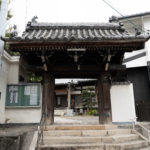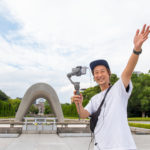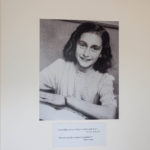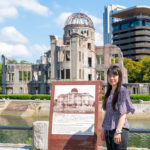“Portrait of Light”: The Importance of Passing the Future on

“Portrait of Light” No.24 by OYA Hideo
A message to the next generation in a single portrait

Prof. MORINAGA Shojiof Hiroshima City University, who joined in the “portrait of light” project
Two years before the 60th anniversary of the atomic bombing in 2005, Hiroshima Peace Memorial Museum asked me to cooperate in the “Passing on the A-bomb Experience” project. Then, I and students drew the experiences of A-bomb survivors. Later, the students who participated in the project expressed an interest in painting portraits of A-bomb survivors. We felt that the time limit was approaching for the A-bomb survivors to pass on their experiences, in other words, to tell their stories to others. While listening to the memorable scenes from the time of the bombing, which would have been impossible immediately after the war, I decided to take on the challenge of painting their portraits. My attempt was to leave them for the next generation, and to leave behind 100 portraits of them with my students over a period of four to five years.
As a person who was born and raised in Hiroshima, the stories of experiences of the A-bomb survivors and the sights of the city at that time, which were not included in the textbooks I heard about in my childhood, have stayed with me as a heavy memory, even as I have grown older. When I heard about the establishment of Hiroshima City University around the time my father was diagnosed with cancer, I decided to return to Hiroshima and later to launch a new project. When I started the project, I didn’t think it was right for me to be involved in such a novel project, but after talking to the person in charge of the Hiroshima Peace Memorial Museum, with whom I was working as a volunteer, he suggested that I try appealing to a number of A-bomb survivor organizations at their meetings, and he invited me to speak with them. I asked them if they would be willing to be a model for this project. When I asked them, they clapped their hands and agreed.
At the reception party after the meeting, the late Mr.TAKAHASHI Akihiro(former director of the Hiroshima Peace Memorial Museum), who happened to be seated next to me said, “You can do whatever you want with us, we will become models.” I was really touched by his enthusiasm. And the after party was karaoke. I rubbed shoulders and sang with people who had suffered both physical and mental distress. That helped me to be prepared. I believe that the reality that people live in is not something artificial, but something existential that only comes from what they have experienced. When we look at the A-bomb survivors from a broader perspective, it seemed to me that the way of life of the survivors becomes even more apparent to us if we include their memories of their experiences in writing, rather than just their portraits, so that we can leave them to the next generation.

Portrait No.25 by MORINAGA Shoji
60 years have passed, and we are able to do things that we couldn’t do immediately after the bombing, but with the aging of the A-bomb survivors, the time left is limited. I feel sorry about whom I promised I would portrait and have already passed away without doing so. But I believe I had a valuable experience of having direct contact with A-bomb survivors, listening to their stories and making them into work.
That’s why I should continue to express this precious experience more and more.

The work “Portrait of Light” was exhibited at Brush Village Studio in Kumano Town during May and June 2020.
Profile: MORINAGA Shoji
Born in Hroshima, 1959. After completing his graduate studies at Tokyo University of the Arts in 1988, served as a part-time lecturer at the same university for three years from 1991. Joined the faculty of Hiroshima City University as an assistant professor in 1994. Currently a professor at Hiroshima City University.
Tags associated with this article








